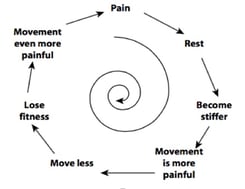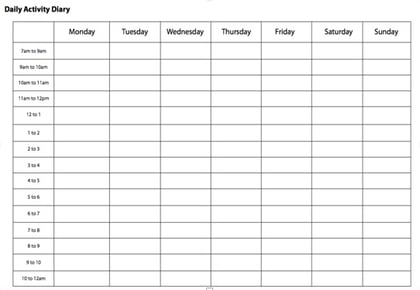Want to do more and feel more energised? Pacing might be for you

Have you ever pulled up sore after too much time in the garden?
.png?width=600&name=BJC%20Facebook%20Post%20(30).png)
Or perhaps you ended up extending your walk by quite a bit due to the glorious, only to feel worse for it afterwards?
Or maybe you are trying to build up your fitness, only to feel tired and lethargic as you try to push yourself?
If any of those questions relate to you or someone you know, then get excited! I'm about to share with you what I feel is one of the most under-utilised strategies out there which can help keep you safe, injury free and in better control of your energy levels.
So what is pacing?
In a nutshell, pacing is an approach to helping you gradually increase your tissue tolerance. If done well, it can help you build fitness, reduce your risk of injury and gain better control of your energy levels!
Pacing involves a pre-planned strategy allowing for successful energy management, with the aim of maximising activity whilst avoiding setbacks due to over-exertion.
How can pacing help you?
It's common when you have a rheumatic disease, or even after a soft tissue injury that you reduce what you are doing. When you are sore, or fatigued, you might typically look for ways to reduce your exercise and take it easy.
Often, this is a GOOD thing to do, and can help settle inflammation and assist your body in making a good recovery. However, if this constant boom and bust cycle becomes an ongoing behaviour pattern, then it can be less helpful for your body.
Pacing is a strategy that helps you understand your body, and make smart choices when it comes to what you do and choose not to do. It can help immensely in terms of avoiding multiple trips to the physio, and avoiding downward spirals of activity and pain.
The below is a graphic that helps represent what many of my patients have been through in the past. Pacing is a strategy which is meant to help prevent this!

So how do you implement pacing?
So if you are interested implementing some good pacing strategies to help you manage your energy levels, see our main principles below. We need to go through each of these steps to get the best impact, so stay with me!
Goal Setting
What is it that you want to do more of? Or what is it that you are hoping to better monitor? It helps if this is something meaningful to you! If your answer was EVERYTHING! Then we need to break that down into some smaller chunks and then prioritise.
Measuring and Recording
This bit involves a bit of work! You need to be honest about how much you are actually doing. The use of activity trackers, fitbits ect can help immensely during this phase, but so will a simple activity diary. The more detail you record, the better. This will hopefully help you and your health care provider a good idea of your daily routines and what patterns in your activity exist. It is up to you whether you record just the one activity (for example gardening) or whether you fill out things in more detail to get a more holistic view.

Set a baseline
Once you have your activity data, you can hopefully see how your body responds to certain levels of activity. If you notice that 90 minutes of gardening regularly contributes to you feeling wiped out afterwards, than your baseline activity level will need to be LESS than this. If you are unsure, start low! Hear are some examples of how of some baseline activity levels I have used in the past with different clients.
-
- 9 holes of golf (instead of 18)
- Cleaning 1 room in the house ( instead of trying to do 4-5 rooms in one go)
- Walking 20 minutes on flat ground
- Trialling 30 minutes of yoga at home (instead of doing a 90 minute session)
The 10% rule
This is how we get our tissue tolerance increasing again! Now we have to make small, regular increments to your chosen activity!
Although it takes patience and awareness, small progressions allow for your body to adapt appropriately to greater activity levels. So if currently you know 60 minutes of gardening is manageable, you might first try to do 65-70 minutes for a few sessions before trialling to increase further. The hardest thing about managing this step is the patience required!! It takes time!! But rest assured that this is how our tissues best like to be loaded. Small and steady increases over time, as opposed to big peaks and troughs is the way to go.
Now today's blog is by no means a solution for all individuals! The best pacing plans are individualised and also take into consideration important factors like sleep, stress levels and your specific injury/condition. Talk to your local Physio or Exercise Physiologist more about this if you are keen to refine things better.
I'll write another post soon, where we work through an example in detail.
In the meantime, happy pacing and happy training!
Read: Is my exercise program safe?

.png?width=940&height=492&name=BJC%20Facebook%20Post%20(30).png)

